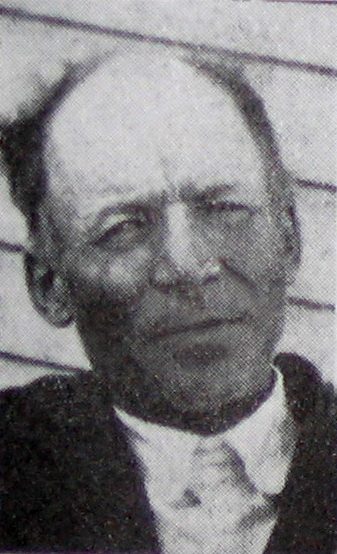(Contributed by the Thomas Tolman Family Organization. Excerpt from Judson Tolman: Pioneer, Lumberman, Patriarch by E. Dennis Tolman, Second Edition, 2004, pages 152-153).
Wilford Richard Tolman was born at Fountain Green, Utah, December 12, 1864. He was the fourth son of Cyrus and Margaret Eliza Utley Tolman. His parents and older brothers had been living in Tooele, Utah but on account of Indian trouble they moved to Fountain Green, where Wilford was born.
He was not a healthy child, being troubled with indigestion and kidney trouble. His mother feared that she would not be able to raise him to manhood, but he gradually grew better and for many years enjoyed very good health. When he was yet a small boy the family moved to Knowllen, Tooele County, Utah, at which place they made their home for several years.
When he was about ten years old, being musically inclined, he had the opportunity to take violin lessons, and at the age of twelve he was playing for the local dances. He was especially adept when it came to playing for the square dances. Later he belonged to various dance orchestras.
Wilford received very little schooling during his early years, but later he took correspondence courses and did a great deal of reading, so that during his life he was very well informed. It was at Knowllen that he met and married Laura Roena McFate. Eight children were born to this union: Wilford Richard (January 6, 1887), Laura May (August 16, 1889), Lulu Edna (August 6, 1891), Hazel Elizabeth (January 23, 1893), Reed Albert (March 26, 1895), John (July 4, 1897), Orson P. (August 29, 1899), and Edward Rutledge (January 28, 1902).
He, his wife and two small children moved to Fairview; Wyoming in the Star Valley, in 1892. At this place he did some farming, and stock raising. While in Fairview he took a course in taxidermy after which he did a great deal of mounting of animals. He mounted several whole elk, which he sold to the Elk’s Lodges in different cities in the eastern United States. In 1903 he took some of his specimens of taxidermy to St. Louis, Missouri. to the World’s Fair, where he
exhibited them and also sold some for a very good price.
In 1910 he moved his family to Otto, Big Horn County, Wyoming, a distance of 500 miles. The trip was made in wagons, trailing a band of sheep. Several days out on the trail his daughter, Hazel, was accidently shot with a .22 rifle, the bullet going through her hand and leg. As no town or doctor was near, Wilford cared for her wounds. He had never taken interest in religion, but believed firmly in the power of prayer. At that time he and his wife retired to a secluded spot and prayed for their daughter’s recovery. Their prayers were answered. The wounds healed in a very short time.
Just about a week after this first accident one of the men who was helping trail the sheep was accidentally shot and killed. They were camped high up on the Continental divide. It was November and Wilford was anxious to get to a lower altitude with his family, and also with the sheep, but had to wait until a coroner arrived from Lander. They waited five days. The family was in quite a state of mind, being stranded in such a place with a corpse, and expecting snow any time. Wilford gathered them into one of the sheep wagons and entertained them with funny stories or his violin to divert their minds.
They were finally able to go on, and the next day they arrived at a small town. Wilford knew that he was going to have to ask a stranger to cash a check, as he was getting short of cash. He entered a general store and made his wishes known. The proprietor said “Are you a Mormon?” Wilford answered “Yes, I’m a Mormon,” fully expecting a refusal, but the proprietor said, “You can have anything in the store. I’ve dealt with your people before and have always found them to be honest.”
Wilford lived the Golden Rule as good as any man and better than most. He was honest and upright and his word was his bond. He felt that “pure religion, undefiled before God, was to visit the widows…” and do good to those in need. Those who knew him best felt his reward would be great on Judgment Day. Wilford could always joke, no matter how serious things were. He was the very finest of neighbors and friends.
It only took the party a few more days to reach their destination, the trip having taken six weeks. Now we make the trip by car in one day. The distance could have been covered in a week at that time with a team and light wagon, without the sheep.
Wilford continued raising stock in the Big Horn Basin until his death of heart failure, November 5, 1929. He was buried in Otto, Big Horn, Wyoming, November 7, 1929.


